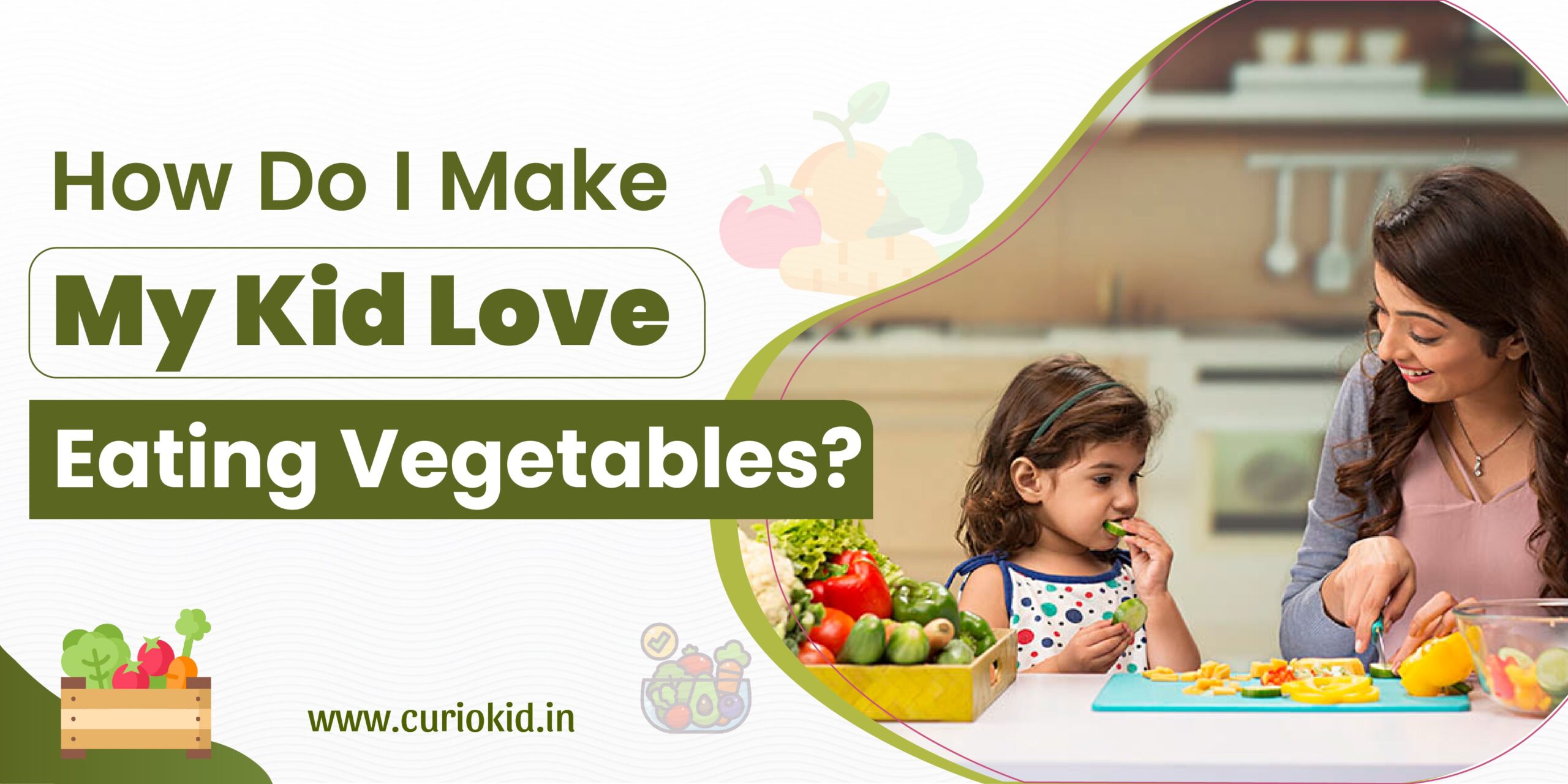As a parent, you know that getting your child to eat vegetables can be an uphill battle. The sight of those vibrant, nutrient-packed goodies often triggers furrowed brows and a resolute shake of the head. But fear not! We’re here to help you navigate this tricky terrain with some creative ways to transform vegetable eating into a delightful adventure for you and your child.
1. Lead By Example
Studies reveal that children often imitate their parents’ eating behaviors. This is quite natural – kids tend to learn many of their habits by observing their parents. If you want to inspire kids to adopt healthy eating habits, it’s important to model those habits in yourself.
Show them how much fun it is to eat healthy meals and find tasty ways to enjoy good-for-you food. Make it clear that choosing nutritious options can also be super delicious! By prioritizing vegetables, fresh fruits, and other nutritious options in your own diet, you’re likely to see your children develop a liking for them as well.
Remember, embracing a healthy diet benefits for you and your kids, regardless of the reasons behind the switch.
2. Understanding Veggie Importance
Before we start to discuss the ways, let’s take a moment to see why veggies are so important. Think of them as nature’s super-gifts, loaded with stuff that helps your child grow, stay healthy, and feel good. They’ve got vitamins, like the ones that keep you from getting sick, and fiber, which is like a broom for your tummy, helping things run smoothly.
Plus, veggies are like the building blocks for strong bones and a body that works really well. So, they’re kind of like magic foods!
3. Create A Positive Food Environment
The journey to vegetable acceptance begins at home, with you leading by example. Your eating habits serve as a powerful influencer on your child’s choices.
Turn mealtimes into a delightful experience with a welcoming and cozy atmosphere. Engage in light conversations, share stories, and build positive associations with food. When your child sees you savoring vegetables, they’re more likely to be intrigued.
4. Get Creative with Veggie Shapes
What if vegetables weren’t just veggies, but magical creations on the plate?
You can turn them into all sorts of fun shapes and designs that will totally catch your child’s eye. Broccoli can become little trees, carrots can be transformed into bright orange power sticks, and bell peppers might just become colorful boats sailing on their dinner plate sea. This creative twist makes veggies feel like characters in a fun story, and your child can have a blast interacting with them before they even take that first tasty bite.
So, it’s like food and play all rolled into one!
5. Engage Your Kid in Cooking
Cooking can actually be a whole lot of fun for kids! You can get them involved in easy kitchen tasks that make them super curious. Things like washing veggies, stirring stuff in pots, or even just putting ingredients together can be like mini-adventures. It’s almost like they’re crafting their own meal, which makes them feel like real food wizards!
Moreover, when kids help out in the kitchen, they’re more likely to give new foods a try. It’s like they’ve had a hand in creating the meal, so they’re excited to taste what they made. Cooking together is not just about food; it’s about creating memories and traditions that can last a lifetime. So, get those little chefs involved, and let the kitchen fun begin!
6. Add Veggies to their Favourite Food

What if we told you that veggies could be ninjas, quietly slipping into your kid’s favorite foods?
You can finely grate or blend veggies and add them to your kid’s favorite foods. For instance, try mixing pureed spinach into creamy palak paneer or finely grated carrots into spicy aloo paratha stuffing. These undercover veggies can sneak into various meals like dal, biryani, and even samosas.
The amazing part? Your child might not even notice they’re enjoying their least favorite veggies in these delicious dishes. It’s like a culinary magic trick, making meals both tasty and nutritious! So, why not give it a try?
7. Celebrate Small Wins with Rewards
Encouragement is a powerful tool. Praise and rewards can go a long way in motivating your child to embrace vegetables. Celebrate each step of progress, whether it’s taking a small nibble or finishing a portion of veggies.
The positive reinforcement creates a sense of accomplishment, making veggies more appealing.
8. Gradually Introduce New Veggies
Introducing new vegetables to your child demands patience and a positive approach. Begin with small portions, celebrating their openness to trying something new. As tastes evolve, disliked veggies may become favorites. Make the experience positive and pressure-free, allowing them to form their own opinions.
Familiar foods can ease the transition, and repeated exposures are key. Celebrate every step, fostering curiosity and healthy eating habits.
9. Make Mealtime A Joyful Experience
Conflicts during mealtime can create unnecessary stress around food and hinder the overall dining experience. To counter this, shift the focus towards a more relaxed and enjoyable atmosphere.
Encourage open conversations at the table that not only revolve around eating but also spark curiosity about different foods. Discussing the origins, colors, and textures of the dishes can make mealtime an educational and engaging experience for your child.
Remember that mealtime serves a dual purpose —(i) nourishment and (ii) meaningful connection.
Take advantage of this time to bond with your child over shared experiences and stories.
10. Educate Kids About Vegetable Benefits
Children’s innate curiosity can be harnessed to foster a positive attitude towards vegetables. Break down the health benefits of veggies into relatable narratives and relatable instances. Paint a vivid picture of how each vegetable is a hero in its own right, contributing to their growth, energy, and overall well-being.
Transform vegetables into captivating characters whose superpowers include boosting their strength, sharpening their minds, and keeping them healthy. By weaving these stories, you’re not just conveying nutritional information, but also nurturing a sense of wonder and excitement around the world of vegetables.
11. Have A Positive Food Talk
The words we choose hold the power to influence perspectives, even when it comes to vegetables.
Instead of saying “You have to eat your vegetables,” approach them such as “Let’s try this new vegetable together.” By making mealtime a collaborative journey, you encourage your child to embrace to try something new rather than feel obligated to eat.
The power of positive language lies in its ability to foster curiosity and cooperation, making the dining experience more enjoyable for both you and your child.
12. Fun and Healthy Veggie Snacks
Snack time presents a wonderful opportunity to infuse creativity and nutrition. Craft delectable vegetable snacks that not only tantalize the taste buds but also spark your child’s interest. You may think of –
Slices of cool cucumbers topped with a little tangy lemon or,
Crunchy carrot sticks served with smooth hummus,
To add a pop of bright colors and yummy tastes, you can also offer colorful bell pepper strips.
These veggie snacks not only satisfy cravings but also contribute to your child’s health, proving that nutritious eating can indeed be a delightful adventure.
13. Gardening and Food Bonding
Nature is a great teacher. You might think about having your very own small vegetable garden right at your house. When you do gardening, you learn to be responsible as well as to take care of things.
You also feel like you’re really connected to the food we put in our tummies. What’s cool is that your child might get even more interested in how things grow, and that might make them want to know more about the food they eat.
14. Picky Eater Strategies
If your child doesn’t want to try new foods, don’t worry too much. Sometimes, kids change their minds about what they like, and that thing they don’t like today could become something they really enjoy later on. It’s a good idea not to make them feel like they have to eat something that they don’t like.
Instead, encourage them to taste new things without feeling scared.
15. Seek Expert Advice If Required
If you’re concerned about your child’s eating habits, don’t hesitate to seek advice from experts. There are doctors who are really good at taking care of kids (Pediatricians) and people who are experts in food and nutrition (Nutritionists).
These experts can listen to your concerns and give you advice that’s just right for your child. They understand that every kid is different, so they’ll help you figure out what’s best for your little one.
Encouraging children to eat vegetables is a journey that requires creativity, patience, and a dash of playfulness. Embrace these strategies and let the adventure unfold. Remember that every small step towards embracing veggies is a step towards building a foundation of healthy eating habits that will benefit your child throughout their life.
And while you’re on the journey to transforming your child’s relationship with veggies, why not make every experience a delightful one? Explore the wonderland of toys and games at Curiokid, the best toy shop in Ahmedabad. Just as we’ve made veggies exciting, Curiokid makes playtime a joyous exploration for your little one.

